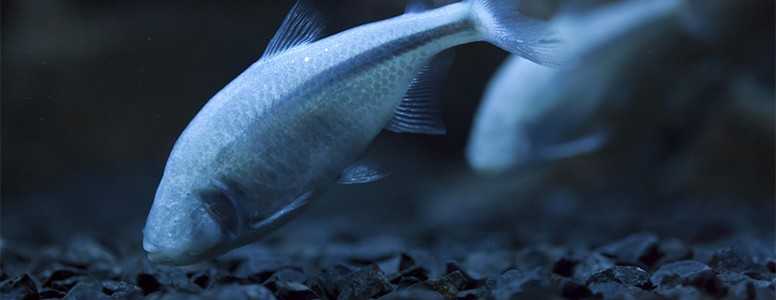Cavefish which portray symptoms similar to type 2 diabetes could help find a treatment for the condition in the future, researchers have said.
The fish, which live in dark caves, are prone to high body fat levels but do not seem to experience any health problems.
Lead author of the study Dr Nicolas Rohner, Stowers Institute for Medical Research, has been studying a Mexican species of the fish called Astyanax mexicanus.
He said: “We found that cavefish have very high body fat levels, are very starvation resistant and have symptoms reminiscent of human diseases such as diabetes and non-alcoholic fatty liver disease.
“However, the fish remain healthy and don’t have any obvious health problems like we see in humans. Untangling the molecular mechanisms or genetics responsible for these adaptations could potentially lead to new insights into human diseases.”
The research team have focused their efforts on the metabolism of the cavefish which they say allow them to survive for long periods of time without food.
They eat once a year when flooding delivers food to the fish. Once they have eaten their fat levels increase significantly. For the rest of the year the creatures draw energy from their fat stores until it is time to eat again.
Cavefish were also found to have high blood glucose levels after they have eaten, which drop when food is not available. The blood glucose pattern is very similar to people who have type 2 diabetes which has not been treated.
Dr Rohner said: “We think that like hibernating animals that acquire extra body fat in the fall to survive the winter, the cavefish become insulin resistant as part of their strategy to acquire high body fat levels.
“Similarly they likely use higher body fat levels to be more starvation resistant during periods when food isn’t available.
“The cavefish are constantly insulin resistant, and that makes the argument even stronger that this is a strategy they are using to gain higher body fat levels. The fish must have also acquired compensatory mechanisms that allow them to stay healthy despite these high fat levels.”
Dr Rohner now believes his findings in the cavefish could help find a new treatment for type 2 diabetes in the future.
He said: “Our approach, which is known as comparative physiology or evolutionary medicine, takes advantage of the fact that many organisms have adapted to very specific environment.
“This is a new and emerging approach aimed at trying to use natural variation as an alternative way to discover novel molecular pathways that might be missed in other types of studies.
“However, we can point towards candidate genes and pathways that cavefish use to stay healthy. This is a unique strategy that evolution has come up with and something that we couldn’t invent. Once we identify the genes and pathways and understand them, then potentially researchers can develop drugs that might help patients.”
In a previous study, the same team had discovered that when cavefish were fed on a daily basis, they increased their body fat levels by 10 times as much as surface fish.
The latest findings were presented at The Allied Genetics Conference (TAGC) 2016, at a meeting which was hosted by the Genetics Society of America.





